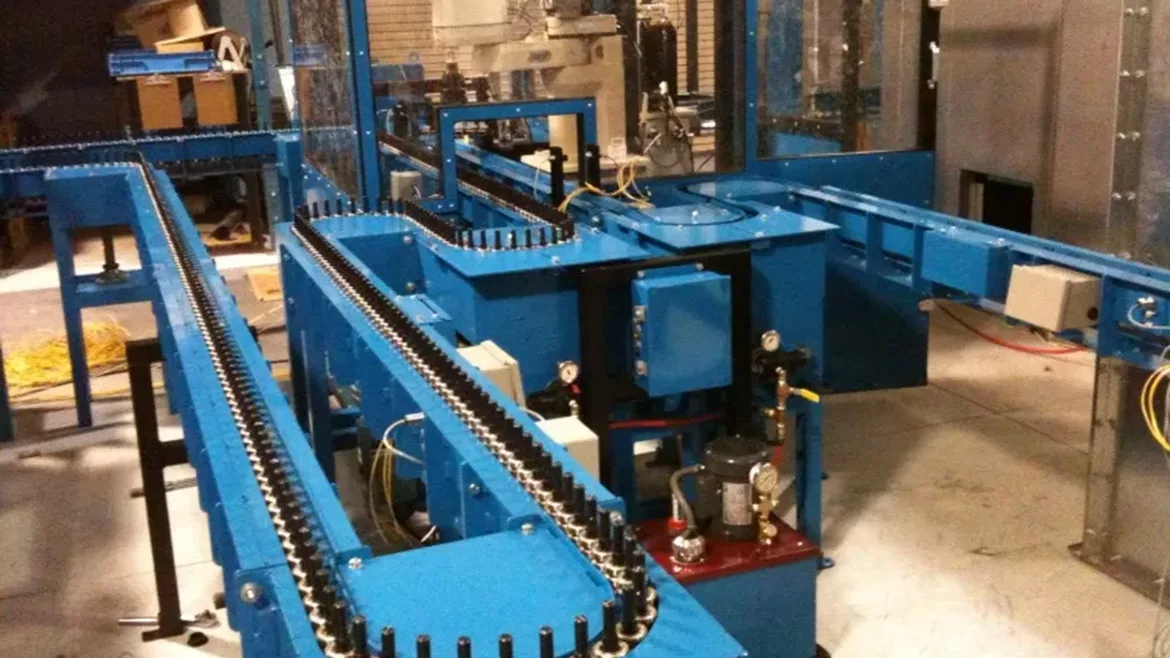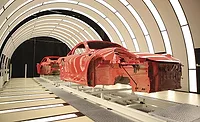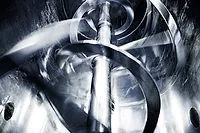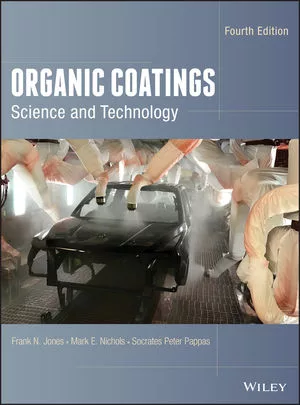Conveyor Innovations Boost Finishing Efficiency

Credit: Precision Conveyor Technologies
Chain-On-Edge (COE) conveyor systems are a staple in many industrial coating operations, yet they’re often underrepresented in the broader conversation around automation and finishing line optimization. For applications that require high-precision part presentation, consistent rotational control and flexible integration with spray and automation processes, COE conveyors provide distinct advantages over more conventional material handling systems.
 Credit: Precision Conveyor Technologies
Credit: Precision Conveyor Technologies
How It Works
A Chain-On-Edge system uses a continuously driven chain loop with vertically oriented spindles mounted on top. Each spindle carries a part, allowing it to rotate freely or remain fixed depending on the application.
While all COE systems guide the chain in some fashion, not all use a fully enclosed track. Designs that enclose the chain within a rigid guide structure provide superior stability—particularly important when coating tall or unbalanced parts where spindle wobble can lead to inconsistent robot paths or poor coating coverage. The enclosed track also offers added protection from overspray and debris, reducing wear and improving long-term reliability in harsh finishing environments.
The result is a compact, precision-guided conveyor system well-suited for automated painting, powder coating and curing applications.
“When part stability, coating consistency and automation compatibility all matter, Chain-On-Edge conveyors hit the mark. They do one thing extremely well: present the part exactly where you need it, every time,” says Jeff Smeker, VP of Engineering, Precision Conveyor Technologies.
Key Design Considerations
- Spindle Type: COE systems can be configured with free-spin, fixed or servo-driven spindles. Free-spinning designs support even coating on symmetrical parts. Fixed spindles are used in curing-only zones or for transporting racks and trays. Servo-controlled spindles allow for precise rotation of asymmetrical parts or indexed presentation of racks during coating.
- Stability & Guidance: Achieving stable part presentation requires a combination of rigid spindle support and consistent chain guidance. Tall or imbalanced parts benefit from dual bearings and lateral guide wheels to minimize wobble—critical for spray consistency and reliable robotic automation. Fully enclosed tracks further enhance system stability, protecting against overspray and debris while maintaining precise part alignment through turns and elevated temperatures.
- Load Capacity & Chain Pitch: Spindle load ratings, chain/drive capacity and minimum turn diameters will vary depending on the chain pitch and the specific COE manufacturer. Matching system specifications to the size, weight and geometry of the parts being conveyed is critical to avoid overdesign—or worse, underdesign that leads to a non-functioning system or premature failure.
 Credit: Precision Conveyor Technologies
Credit: Precision Conveyor Technologies Where COE Outperforms
- Compact Footprint: The inherent design of COE systems allows for small turn radii, enabling tighter layouts and more efficient use of floor space.
- Controlled Part Rotation: Enables uniform coverage with minimal overspray, crucial in both manual and robotic applications.
- Integrated Indexing: COE systems allow parts to be automatically stopped, rotated and restarted at precise locations, eliminating the need for complex conveyor tracking. This enables seamless integration with robotic spray and other online processing systems.
- Simpler Automation: Because COE systems provide consistent, stable part presentation with minimal wobble, they simplify automation. Robots can operate with tighter tolerances and more predictable motion paths, reducing the complexity of programming and improving process reliability.
Common COE Applications
Chain-On-Edge systems are used across a wide range of finishing applications, from manual batch operations to fully automated high-volume production. Their flexibility makes them suitable for:
- Production Scale: COE conveyors support everything from small-batch manual systems with operator-loaded fixtures to high-throughput, robotically integrated lines running thousands of parts per shift.
- Process Types: Commonly used in liquid coating, powder coating and adhesive application systems, COE conveyors also handle washing, pretreatment and drying, curing or baking—all within a compact, process-integrated layout.
This versatility allows system designers to tailor COE conveyors to meet specific production goals, part requirements and line configurations.
 Typical process flow in a Chain-On-Edge finishing system. COE conveyors can integrate pretreatment, liquid or powder coating, drying/curing, cooling and both manual or automatic load/unload zones. Credit: Precision Conveyor Technologies
Typical process flow in a Chain-On-Edge finishing system. COE conveyors can integrate pretreatment, liquid or powder coating, drying/curing, cooling and both manual or automatic load/unload zones. Credit: Precision Conveyor Technologies Conclusion
Whether you're specifying a new finishing line or exploring conveyor options for a coating process, Chain-On-Edge systems deserve a closer look. Their modular nature, rotational control and compatibility with modern automation make them one of the most versatile conveyor types in the finishing world. As labor availability and skill levels continue to challenge manufacturers, the simplicity and repeatability of COE systems offer a practical path toward greater process consistency and reduced manual dependency.
Looking for a reprint of this article?
From high-res PDFs to custom plaques, order your copy today!








